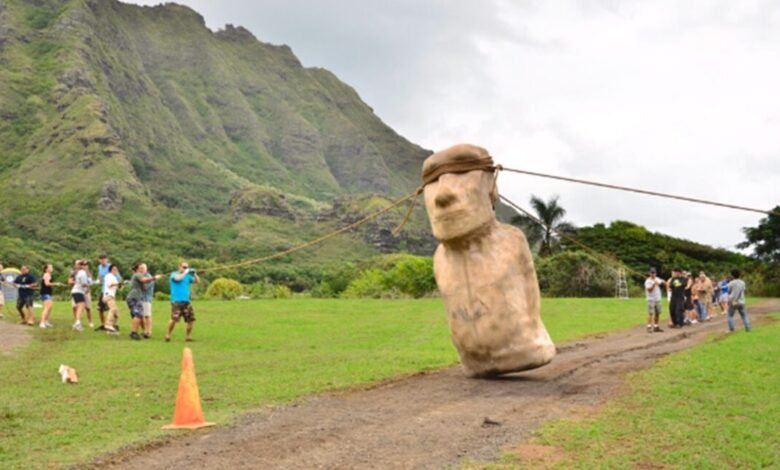How Easter Island’s Giant Statues Walked to Their Platforms

▼ Summary
– Easter Island is known for its giant moai statues built around 800 years ago, which were placed on platforms called ahu.
– Archaeologist Carl Lipo proposed that the statues were transported upright by “walking” them with ropes, supported by local oral traditions.
– Lipo provided new experimental evidence in a 2022 paper using 3D modeling and field tests to demonstrate the feasibility of this method.
– Earlier experiments showed that just 18 people could move a 5-ton moai using a rocking motion, challenging assumptions that required large populations.
– Research also indicated that moai locations were chosen based on freshwater sources, and red hats were likely placed using ramps and ropes.
The colossal stone figures of Easter Island, known as moai, have captivated researchers and visitors alike for generations. These massive statues, some weighing nearly 92 tons, were carved and positioned on ceremonial platforms called ahu around 800 years ago. A persistent question has been how a Stone Age society managed to move such enormous stone carvings across the island. One compelling theory, supported by archaeologist Carl Lipo and his colleagues, suggests the moai were transported upright, carefully “walked” into place using a system of ropes.
Local oral histories from Rapa Nui include stories and songs describing the statues walking from the quarry to their final platforms. While earlier small-scale experiments hinted this might be feasible, the idea also drew skepticism from other experts. Lipo recently co-authored a study in the Journal of Archaeological Science presenting new experimental support for the walking hypothesis. His team used 3D modeling to analyze the physics involved and conducted field tests to replicate the proposed movement.
When European explorers reached the island in the 17th century, they encountered only a few thousand people living in extreme isolation. To explain the hundreds of moai scattered across the landscape, many assumed the island must have once supported a much larger population. Lipo, however, questioned whether fewer individuals could have achieved this. In 2012, he and University of Arizona researcher Terry Hunt demonstrated that an 18-person team, using three sturdy ropes, could move a 5-ton, 10-foot moai several hundred yards using a controlled rocking technique.
Lipo continued investigating other aspects of the moai in later years. In 2018, he proposed a method for how the islanders may have placed the massive red stone hats, known as pukao, atop certain statues, some of which weigh as much as 13 tons. His hypothesis involved rolling the hats up a ramp using ropes. In a separate 2019 study published in PLOS One, Lipo and his team used spatial modeling to suggest that the placement of the moai was closely linked to locations with accessible freshwater sources, offering new insight into the statues’ cultural and practical significance.
(Source: Ars Technica)
